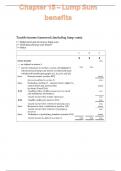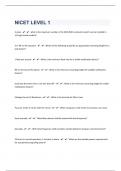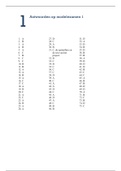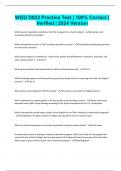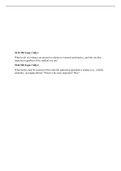Summary
TAX3761 - Exam Notes - Learning Unit 10 - 17 Notes/Summary 2024
- Course
- Institution
- Book
TAX3761 - Learning Unit 10 - 17 Notes/Summary Notes and summaries of learning unit 10-17 10 - Individuals : Income and expenses 11 - Fringe Benefits and allowances 12 - Lump sum benefits 13 - Non-residents 14 - Prepaid taxes 15 - Trusts 16 - Donations Tax 17 - Estate duty
[Show more]
